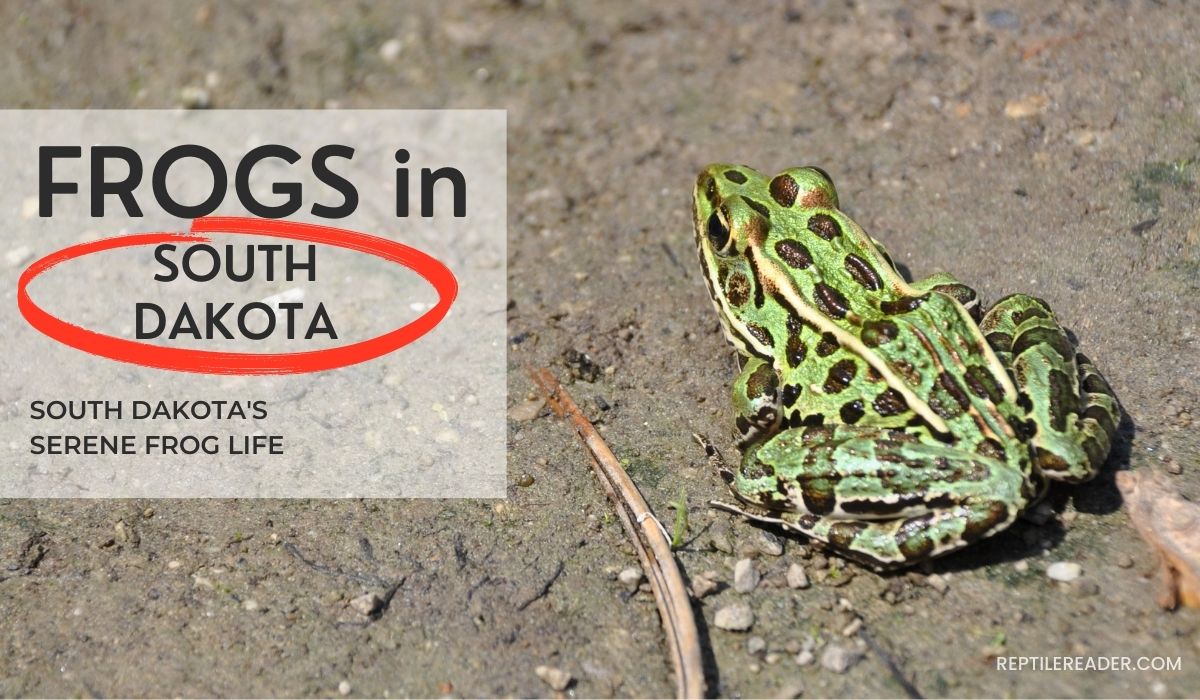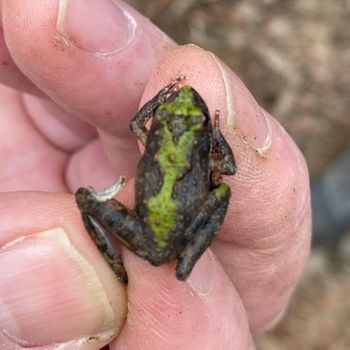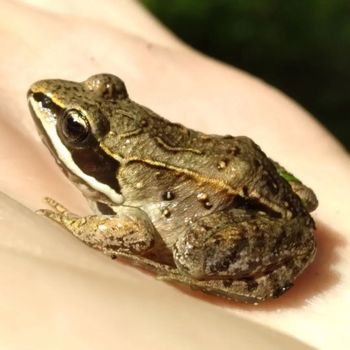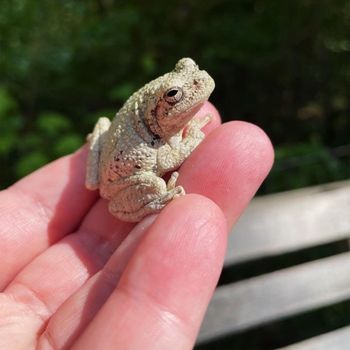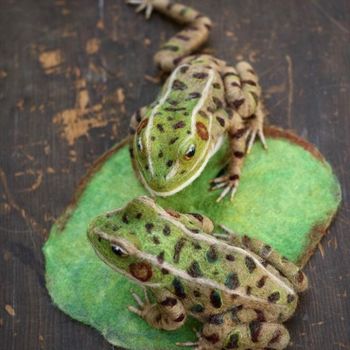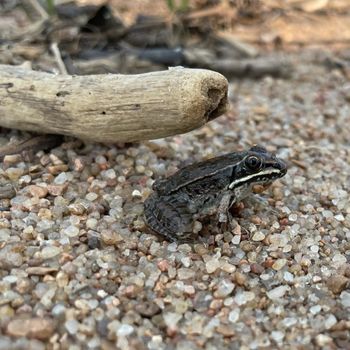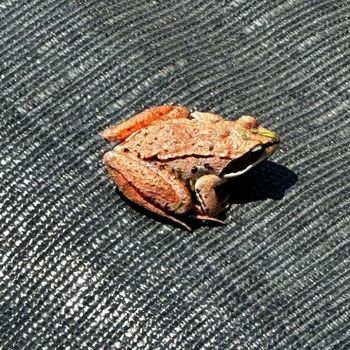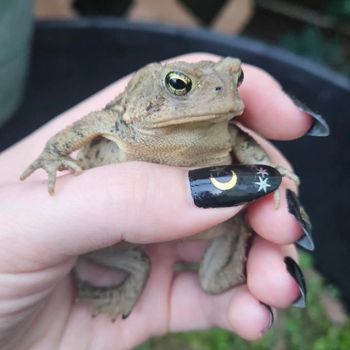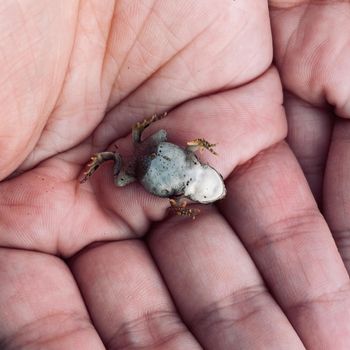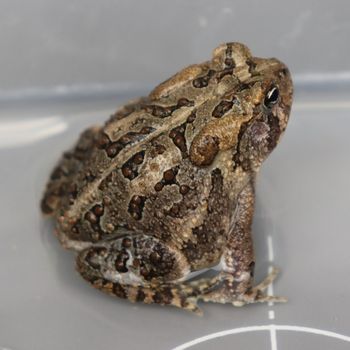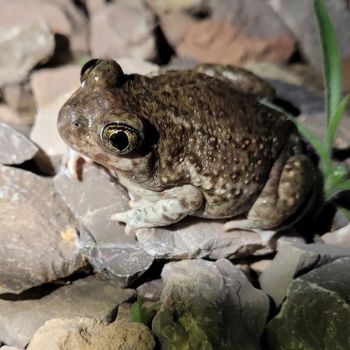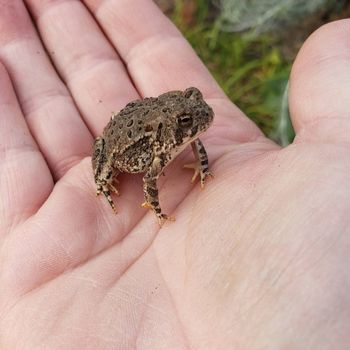Frogs in South Dakota: South Dakota’s Serene Frog Life
You might be wondering what kind of amphibians you could possibly find in a state like South Dakota, but you may be surprised to learn that there are not one, not two, but twelve different species of frogs hopping around this beautiful state!
From the vast prairies to the scenic Black Hills, South Dakota offers a diverse habitat for these fascinating creatures to thrive. The next time you’re out exploring nature here, be sure to keep an eye out for these slimy little friends.
In this article, we’re going to take a closer look at the 12 species of frogs calling South Dakota home – get ready to hop into some fun facts, and don’t forget your camera to capture a glimpse of these amazing critters!
| # | Name | Details | Image |
| 1 | American Bullfrog (Lithobates catesbeianus) |
| 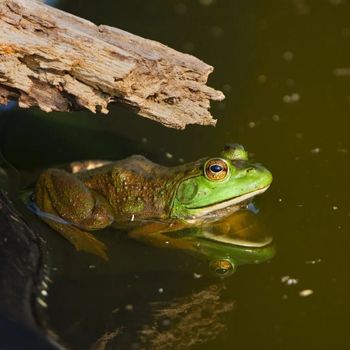 |
| 2 | Blanchard’s Cricket Frog (Acris blanchardi) |
| 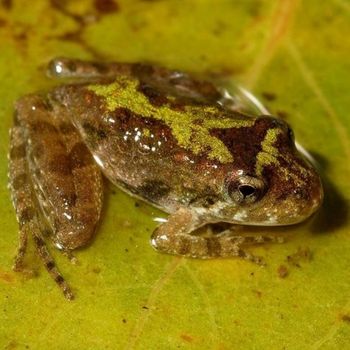 |
| 3 | Boreal Chorus Frog (Pseudacris maculata) |
| 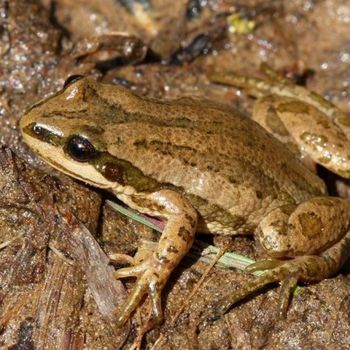 |
| 4 | Cope’s Gray Tree Frog (Hyla chrysoscelis) |
| 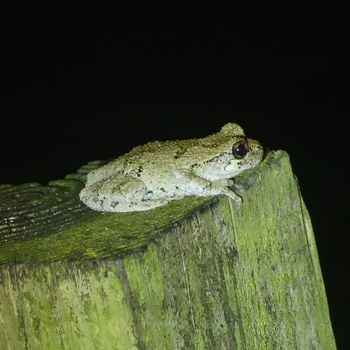 |
| 5 | Northern Leopard Frog (Rana pipiens) |
| 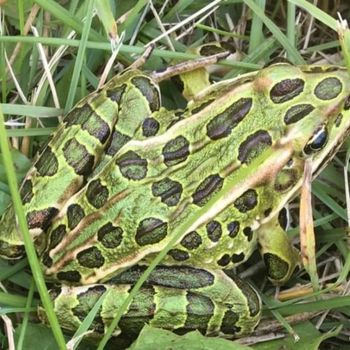 |
| 6 | Plains Leopard Frog (Lithobates blairi) |
| 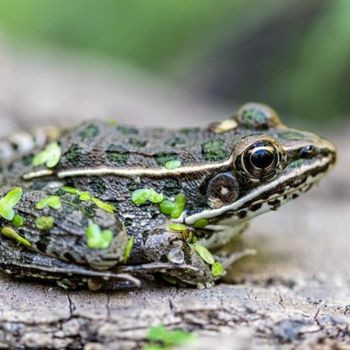 |
| 7 | Wood Frog (Rana sylvatica) |
| 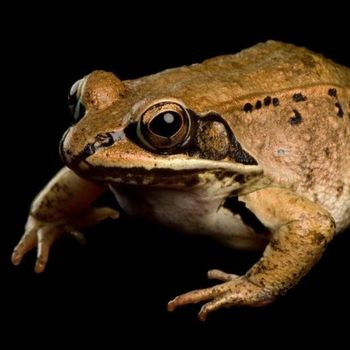 |
| 8 | American Toad (Anaxyrus americanus) |
|  |
| 9 | Canadian Toad (Anaxyrus hemiophrys) |
| 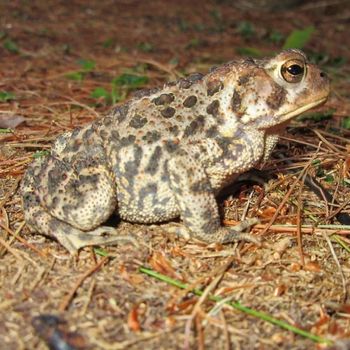 |
| 10 | Great Plains Toad (Anaxyrus cognatus) |
| 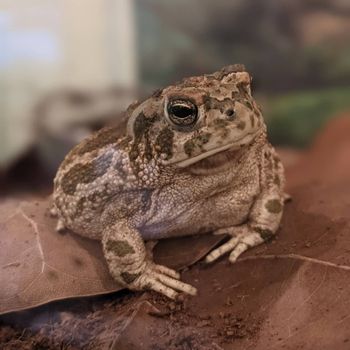 |
| 11 | Plains Spadefoot Toad (Spea bombifrons) |
| 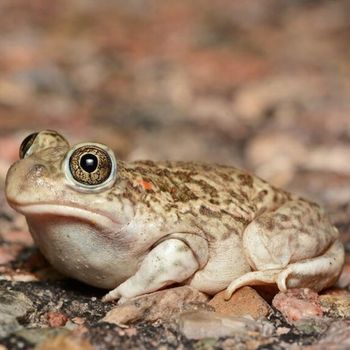 |
| 12 | Woodhouse’s Toad (Anaxyrus woodhousii) |
|  |
Are There Any Similarities Between Frog Species in South Dakota and North Dakota?
Frog species in South Dakota and North Dakota share several similarities, including habitat preferences and breeding behaviors. Wetlands, ponds, and streams in both states provide an ideal environment for amphibians. The adaptability of frogs in dakota to cold winters is another common trait, ensuring their survival in these northern ecosystems.
12 Frog Species You Can Find in South Dakota
Get ready to dive deep into the lives of 12 incredible frog species that call South Dakota their home, showcasing their unique adaptations and remarkable behaviors.
1. American Bullfrog
- Scientific Name: Lithobates catesbeianus
- Common Name: American bullfrog
- Size: 3.5-6 inches (9-15 cm)
- Color & Pattern: Green to brown with dark spots and patterns
- Natural Habitat: Ponds, lakes, marshes, slow-moving streams
- Geographic Range: Eastern and central united states, canada, mexico, introduced worldwide
- Diet: Fish, crustaceans, insects, small mammals, birds, other amphibians
- Reproduction: Breeds in aquatic habitats, lays eggs in flat surfaces on water
- Vocalization: Deep, low-pitched calls by males during breeding
- Adaptation: Highly adaptable, strong legs for jumping and swimming
- Conservation Status: Least concern
Immerse yourself in the world of the American Bullfrog (Lithobates catesbeianus), a striking amphibian with a size ranging from 3.5 to 6 inches (9-15 cm). Adorned in a rich palette of green to brown, they exhibit dark spots and patterns which serve as excellent camouflage within their habitat. These aquatic creatures can leap and swim with grace and strength, due to their powerful legs.
Dwelling in the eastern and central United States, Canada, Mexico, and various regions around the world, they call ponds, lakes, marshes, and slow-moving streams their home. They satiate their hunger with a diverse diet of fish, crustaceans, insects, small mammals, birds, and other amphibians. The American Bullfrog is even known to be cannibalistic, predating on native species in introduced areas.
During breeding season, male Bullfrogs exclaim deep, low-pitched calls to attract mates, resulting in them laying their eggs in flat surfaces on the water for successful reproduction. Despite being a significant predator, their conservation status remains of least concern and they continue to thrive, showcasing their impressive adaptability. Delve deeper into the world of this fascinating amphibian, and uncover more about its unique quirks and captivating existence.
2. Blanchard’s Cricket Frog
- Scientific Name: Acris blanchardi
- Common Name: Blanchard’s cricket frog
- Size: 0.6-1.5 inches (1.5-3.8 cm)
- Color & Pattern: Varied green, gray, or brown with darker markings or spots
- Natural Habitat: Shallow wetlands, lakes, and streams with grassy or muddy edges
- Geographic Range: Southeast canada and eastern united states
- Diet: Aquatic insects, spiders, and small invertebrates
- Reproduction: Breeds in shallow water bodies, females lay eggs individually or in small clumps
- Vocalization: Sharp, high-pitched peeping calls by males during breeding
- Adaptation: Powerful hind legs for long jumps, small size for hiding and escaping predators
- Conservation Status: Least concern
Introducing Acris blanchardi, the diminutive amphibian more commonly known as Blanchard’s Cricket Frog, who dazzles with a varied array of green, gray, or brown tones adorned with darker markings or spots. These energetic frogs are experts in camouflage, measuring only 0.6-1.5 inches (1.5-3.8 cm) in length, and use their powerful hind legs to leap up to 3 feet (1 meter) in a single bound!
Preferring the serene shallow wetlands, lakes, and streams with grassy or muddy edges of southeast Canada and the eastern United States, Blanchard’s Cricket Frogs find the perfect estuaries to feast on their diet of aquatic insects, spiders, and other small invertebrates. These agile performers serenade their mates with sharp, high-pitched peeping calls, after which the female lays her eggs individually or in small clumps in the shallows.
Despite being tiny, it’s hard not to take notice of Blanchard’s Cricket Frogs due to their prodigious egg-laying skills, producing spawn almost continuously through the breeding season under the conservation status of “Least Concern”. The blend of their unique adaptations, spectacular colorations, and energetic leaps leave no doubt that Blanchard’s Cricket Frogs are truly one-of-a-kind.
3. Boreal Chorus Frog
- Scientific Name: Pseudacris maculata
- Common Name: Boreal chorus frog
- Size: 0.8-1.6 inches (2-4 cm)
- Color & Pattern: Gray, brown or green with dark stripes on the back and sides
- Natural Habitat: Marshes, grasslands, wet meadows
- Geographic Range: Northwestern united states and canada
- Diet: Small insects, spiders, and other invertebrates
- Reproduction: Breeds in shallow water, lays eggs attached to vegetation
- Vocalization: Series of ascending, short trills
- Adaptation: Able to change color for camouflage, strong climbers
- Conservation Status: Least concern
Hidden in the marshes, grasslands, and wet meadows of northwestern United States and Canada, the small creature with a big voice, the Boreal Chorus Frog, thrives. Although diminutive in size, measuring only 0.8-1.6 inches, their distinct colors and patterns of gray, brown, or green with dark stripes on the back and sides allow them to stand out in their environment. Pseudacris maculata, as they’re known in the scientific community, have an impressive ability to change their color for camouflage and are remarkable climbers.
Surviving primarily on small insects, spiders, and other invertebrates, these talented amphibians lay their eggs attached to vegetation in shallow water, filling the surrounding area with a series of ascending, short trills to establish their presence. Fascinatingly, these frogs have developed concentrated antifreeze proteins that allow them to endure freezing temperatures – a vital adaptation in their often chilly habitat.
Fortunately, the conservation status of this South dakota resident is deemed the least concern due to their versatile adaptations and stable population, ensuring these interesting creatures remain an essential part of their ecosystem.
4. Cope’s Gray Tree Frog
- Scientific Name: Hyla chrysoscelis
- Common Name: Cope’s gray tree frog
- Size: 1.0-2.0 inches (2.5-5.1 cm)
- Color & Pattern: Gray, green or brown with darker spots or patches, white underside
- Natural Habitat: Forests, swamps, wooded areas
- Geographic Range: Eastern united states and southeastern canada
- Diet: Insects, spiders, small invertebrates
- Reproduction: Breeds in freshwater habitats, lays eggs on water surface
- Vocalization: Short, rapid trills by males during breeding season
- Adaptation: Ability to change color, cling to surfaces, freeze-tolerance
- Conservation Status: Least concern
Perched high among the trees in the eastern United States and southeastern Canada, the enchanting Cope’s Gray Tree Frog thrives (Hyla chrysoscelis). With a petite frame of 1.0-2.0 inches (2.5-5.1cm), this shy creature can blend seamlessly into its surroundings, changing colors from gray, green, or brown with darker accents, while sporting a pristine white underside.
Feasting on insects, spiders, and other small invertebrates, the Cope’s Gray Tree Frog builds its life amid dense forests, swamps, and other wooded areas. As for reproduction, they embrace their love affair with water, breeding in freshwater habitats and laying their eggs on the surfaces of various bodies of water. This delicate creature takes part in a melodious symphony, with males contributing short, rapid trills during the breeding season.
Possessing an array of astounding adaptations, these frogs residing in South dakota can not only change color, but also cling to surfaces with ease and display an exceptional freeze-tolerance. In fact, they are known to survive even when partially frozen. With a conservation status of “least concern,” the enigmatic Cope’s Gray Tree Frog perseveres, occasionally venturing to the ground, but more often gracing the treetops with its whimsical charm.
5. Northern Leopard Frog
- Scientific Name: Rana pipiens
- Common Name: Northern leopard frog
- Size: 2.0-4.3 inches (5.1-11 cm)
- Color & Pattern: Green or brown with dark spots circled by a lighter border
- Natural Habitat: Marshes, swamps, grasslands, wetlands
- Geographic Range: Canada and the united states (alaska to new mexico)
- Diet: Insects, spiders, small crustaceans, other invertebrates
- Reproduction: Breeds in shallow, well-vegetated freshwater habitats, lay eggs in clusters attached to vegetation
- Vocalization: Snore-like call by males during breeding
- Adaptation: Long, powerful legs for jumping, partially webbed hind feet for swimming
- Conservation Status: Least concern
These captivating creatures are perfectly suited for life in marshes, swamps, grasslands, and wetlands, stretching from Alaska to New Mexico in North America. Their partially webbed hind feet allow them to swim gracefully, while their long, powerful legs support impressive jumping abilities.
With a main diet of insects, spiders, small crustaceans, and other invertebrates, these voracious eaters keep their habitats in South dakota lively. During breeding season, these frogs settle in shallow, well-vegetated freshwater habitats, and females lay eggs in clusters attached to vegetation. To attract a mate, male frogs serenade their companions with a unique, snore-like vocalization.
Remarkably, the Northern Leopard Frog is capable of surviving being frozen, an unparalleled adaptation contributing to their classification as “Least Concern” in conservation statuses. However, it is worth noting that habitat loss may lead to a decline in future populations. Overall, these fascinating frogs continue to enchant us with their beauty, resilient nature, and captivating behaviors.
6. Plains Leopard Frog
- Scientific Name: Lithobates blairi
- Common Name: Plains leopard frog
- Size: 2-3.5 inches (5-9 cm)
- Color & Pattern: Green or brown with prominent dark spots and light-colored dorsolateral ridges
- Natural Habitat: Wetlands, prairies, grasslands, ponds, and streams
- Geographic Range: Central united states, texas to nebraska, mississippi to arizona
- Diet: Insects, spiders, centipedes, and various aquatic invertebrates
- Reproduction: Breeds in still or slow-moving water, lays eggs in clusters attached to submerged vegetation
- Vocalization: Calls consist of a series of low, guttural rumbles and croaks
- Adaptation: Powerful legs for swimming and leaping, ability to tolerate drier habitats
- Conservation Status: Least concern
A master of agility, its powerful legs provide exceptional swimming and leaping capabilities, as it gracefully navigates wetlands, prairies, and grasslands throughout the Central United States – from Texas to Nebraska, and Mississippi to Arizona.
Thriving in still or slow-moving water, these feisty frogs lay their eggs in clusters, hidden amidst submerged vegetation. With an appetite for insects, spiders, centipedes, and aquatic invertebrates, their guttural rumbles and croaks reveal their lively presence, making them an essential contributor to a thriving ecosystem.
These versatile creatures boast an ability to regenerate lost appendages, making them vital indicator species for ecosystem health. They are resilient, tolerating drier habitats and currently classified under the “Least Concern” for conservation status – a fascinating, dynamic, and significant component of our natural world.
7. Wood Frog
- Scientific Name: Rana sylvatica
- Common Name: Wood frog
- Size: 1.4-3.7 inches (3.5-7.6 cm)
- Color & Pattern: Tan or brown with dark mask around eyes and back leg stripe
- Natural Habitat: Woodlands, bogs, swamps
- Geographic Range: North america, from alaska to new england, and south to northern georgia
- Diet: Insects, spiders, worms, slugs, snails
- Reproduction: Breeds in freshwater habitats, lays eggs in clusters attached to vegetation
- Vocalization: Males make a duck-like quacking sound during breeding
- Adaptation: Ability to freeze and thaw as a means to survive cold conditions
- Conservation Status: Least concern
Meet the captivating Rana sylvatica, commonly known as the Wood Frog, a forest-dwelling amphibian with an exquisite flair for blending into its surroundings. Sporting a fashionable tan or brown, adorned with a dark mask around its eyes, and a sleek stripe on its back legs, this petite creature ranges from 1.4-3.7 inches in size (3.5-7.6 cm). Its range spans North America, from the bustling wilds of Alaska to New England, with southern settlers in northern Georgia.
A gourmand of small delicacies, the Wood Frog feasts on a varied menu consisting of insects, spiders, worms, slugs, and snails. Its breeding rituals take place in the serene freshwater habitats it calls home, laying its precious eggs in clusters that find attachment on submerged vegetation. The debonair males serenade potential mates with duck-like quacking during these amorous encounters.
The true pièce de résistance of this incredible species is their unparalleled ability to freeze and thaw, permitting survival in harsh, cold conditions. Amidst this extraordinary talent, the Wood Frog is not considered at risk with a conservation status deemed of least concern. The fascinating life of the Wood Frog unfolds with eggs hatching within mere weeks, showcasing their resilient nature and true wonder.
8. American Toad
- Scientific Name: Anaxyrus americanus
- Common Name: American toad
- Size: 2-4.5 inches (5-11.4 cm)
- Color & Pattern: Varied brown, gray, or green with darker spots or patches
- Natural Habitat: Forests, fields, suburban areas
- Geographic Range: Eastern north america (canada to mexico)
- Diet: Insects, spiders, snails, small invertebrates
- Reproduction: Breeds in freshwater habitats, lays eggs attached to vegetation
- Vocalization: High-pitched trilling call by males during breeding
- Adaptation: Parotoid glands secrete toxin, can inflate themselves
- Conservation Status: Least concern
The delightful Anaxyrus americanus is commonly known as the American Toad. A medium-sized creature, stretching 2 to 4.5 inches (5-11.4 cm) in length, this charming amphibian sports a varied wardrobe of brown, gray, or green, adorned with darker spots or patches. Adapted to a range of habitats, including forests, fields, and suburban areas, it can be found croaking its way across eastern North America, from Canada to Mexico.
Armed with a voracious appetite, these intriguing l’il toads are the knights of the night, serving as important insect controllers. As nocturnal hunters, their diet consists of insects, spiders, snails, and other small invertebrates. When the time comes to multiply their forces, they breed in freshwater habitats and lay their eggs, spending their days singing a high-pitched, trilling serenade.
Fear not, for these cute-looking critters are packed with an array of impressive adaptations. Equipped with parotoid glands, they ooze a secret toxin when threatened, and can even inflate themselves to defy predators. Currently enjoying a stable environment, the conservation status of the American Toad is of “Least Concern.” Yet, their fascinating nighttime escapades make them an awe-inspiring addition to our ecosystem.
9. Canadian Toad
- Scientific Name: Anaxyrus hemiophrys
- Common Name: Canadian toad
- Size: 2-3.5 inches (5-9 cm)
- Color & Pattern: Brown or gray with dark patches, light stripe down back
- Natural Habitat: Prairies, wetlands, woodlands
- Geographic Range: Central and western canada to northern us
- Diet: Insects, spiders, slugs, small invertebrates
- Reproduction: Breeds in shallow freshwater habitats, lays eggs in long strings
- Vocalization: High-pitched call by males during breeding
- Adaptation: Darker skin for better camouflage, ability to burrow
- Conservation Status: Least concern
Meet the enigmatic Canadian Toad, scientifically known as Anaxyrus hemiophrys. This small yet captivating creature measures between 2 to 3.5 inches and sports a brown or gray color adorned with captivating dark patches and a light stripe down its back. Dwelling in the picturesque landscapes of prairies, wetlands, and woodlands across Central and Western Canada to the Northern US, this enchanting amphibian seamlessly blends in with its surroundings.
With an eclectic diet consisting of insects, spiders, slugs, and various small invertebrates, the Canadian Toad is a voracious little hunter. To perpetuate their species, they breed in shallow freshwater habitats, laying their eggs in intricate long strings. Male Canadian Toads assert their presence with a distinctive high-pitched call during mating season, a captivating serenade unique to this species.
What truly sets the Canadian Toad apart are its fascinating adaptations, such as its darker skin which provides better camouflage and its innate ability to burrow deep into the earth. Incredibly sensitive to temperature changes, it spends its winters hibernating underground in cozy burrows. With a conservation status of “Least Concern,” the Canadian Toad continues to thrive in its captivating habitats and remains a fascinating species in the wild.
10. Great Plains Toad
- Scientific Name: Anaxyrus cognatus
- Common Name: Great plains toad
- Size: 3-4.5 inches (7.5-11.4 cm)
- Color & Pattern: Green or brown with dark blotches; a white stripe down the center of the back
- Natural Habitat: Grasslands, sagebrush, floodplains
- Geographic Range: Central north america (southern canada to mexico)
- Diet: Insects, spiders, small invertebrates
- Reproduction: Breeds in temporary pools, lays eggs in long strings
- Vocalization: Multi-trill call by males during breeding
- Adaptation: Thick skin to minimize water loss, explosive breeding during rains
- Conservation Status: Least concern
The fascinating Anaxyrus cognatus, commonly known as the Great Plains Toad, boasts a captivating appearance with its distinct green or brown hues and dark blotches adorning its 3-4.5-inch body. This charming creature also features a striking white stripe running down the center of its back, making it a truly captivating sight in the wild.
Roaming across the vast grasslands, sagebrush, and floodplains of Central North America, these captivating amphibians have an insatiable appetite for insects, spiders, and small invertebrates. The alluring melodies of their multi-trill calls echo through the air, as males serenade their potential mates during breeding season in temporary pools where they lay their eggs in long strings.
Notable for their thick skin, designed to minimize water loss, the Great Plains Toad adapts to its environment by employing explosive breeding during rains and burrowing in the soil to aestivate during dry periods. With a current conservation status of “Least Concern,” we can continue to marvel at these extraordinary toads and their remarkable abilities.
11. Plains Spadefoot Toad
- Scientific Name: Spea bombifrons
- Common Name: Plains spadefoot toad
- Size: 1-2.5 inches (2.5-6.3 cm)
- Color & Pattern: Greenish, grayish, or brown with darker spots or blotches
- Natural Habitat: Grasslands, savannas, prairies
- Geographic Range: Great basin, great plains regions of the united states and canada
- Diet: Insects, spiders, small invertebrates
- Reproduction: Breeds in temporary pools, lays eggs singly or in small clusters
- Vocalization: Males create low-pitched, snore-like calls during breeding
- Adaptation: Hard, spade-like projections on hind legs for digging, secretion of toxin, estivation in dry periods
- Conservation Status: Least concern
Venture into the Great Basin and Great Plains regions of the United States and Canada, and you may stumble upon the enchanting Plains Spadefoot Toad (Spea bombifrons). This mysterious creature exhibits a captivating color scheme of greenish, grayish, or brown with darker spots or blotches, blending seamlessly into grasslands, savannas, and prairies, its preferred habitat.
Measuring 1-2.5 inches (2.5-6.3 cm) and feasting on insects, spiders, and other small invertebrates, this toad can be quite elusive. Yet, during breeding season, males can be heard creating low-pitched, snore-like calls, luring a mate to temporary pools where they lay their eggs singly or in small clusters. Interestingly, other toads have been known to mimic the call of the Plains Spadefoot Toad.
Equipped with hard, spade-like projections on its hind legs, the Plains Spadefoot Toad can burrow into the earth during dry periods, a process known as estivation. This resourceful creature residing in South dakota also secretes toxins as a defense mechanism. Though its conservation status is currently of “least concern,” heavy rains can draw these fascinating toads to the surface, revealing their presence to the curious observer.
12. Woodhouse’s Toad
- Scientific Name: Anaxyrus woodhousii
- Common Name: Woodhouse’s toad
- Size: 2-5 inches (5-12.7 cm)
- Color & Pattern: Gray, green, or brown with dark blotches, light-colored midline stripe
- Natural Habitat: Grasslands, shrublands, forests, agricultural fields
- Geographic Range: Western north america (from southern canada to northern mexico)
- Diet: Insects, spiders, and other small invertebrates
- Reproduction: Breeds in temporary or permanent bodies of water, lays eggs in long strings
- Vocalization: Males produce a long, nasal trill during breeding season
- Adaptation: Parotoid glands secrete bufotoxin, good burrowers
- Conservation Status: Least concern
Anaxyrus woodhousii, commonly known as Woodhouse’s Toad, is a small and adaptable amphibian found throughout western North America – from the fields of southern Canada to the forests of northern Mexico. Measuring 2-5 inches in length, this friendly toad boasts a mottled gray, green, or brown appearance with dark blotches and a distinctive light-colored midline stripe down its back.
This resourceful creature thrives in a range of habitats, from grasslands and shrublands to forests and agricultural fields. They enjoy a hearty diet of insects, spiders, and other small invertebrates. During the breeding season, male Woodhouse’s toads serenade their potential mates with a long, nasal trill, laying their eggs in lengthy strings within temporary or permanent bodies of water.
The Woodhouse’s Toad is well adapted for survival, possessing parotoid glands that secrete a potent toxin called bufotoxin to deter predators. They are also adept burrowers, easily creating underground shelters. Although their conservation status is currently listed as “least concern,” their populations have been impacted by pesticide use. This versatile and resilient toad continues to play an essential role in our diverse North American ecosystems.
Nearby States:
Final Words
In summary, South Dakota boasts a remarkable array of 12 diverse frog species, displaying a kaleidoscope of colors, patterns, and unique adaptations. Embark on a fascinating journey through their habitats, appreciating their distinctive vocalizations, and uncover the secret lives of these magnificent amphibians that grace the state of South Dakota. These frogs play a crucial role in maintaining balanced ecosystems, serving as both predators and prey in their environments. Interestingly, many of these species share similarities with frogs native to North Dakota, highlighting the interconnectedness of these neighboring regions’ amphibian populations. Through continued conservation efforts, we can ensure that these remarkable creatures thrive for generations to come.

